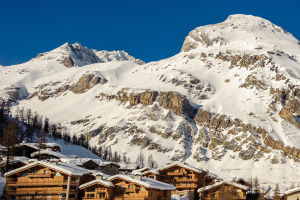The Northern Lights, also known as the Aurora Borealis, have captivated and intrigued humanity for centuries. This breathtaking celestial phenomenon, characterized by shimmering ribbons of colorful lights dancing across the night sky, has often been accompanied by a fascinating mystery.
Many people claim to have heard peculiar sounds emanating from the Northern Lights, adding an enchanting dimension to this already magical spectacle. Let’s delve into the phenomenon of the alleged sounds associated with the Northern Lights and explore whether people can genuinely hear these mysterious noises.
For generations, folklore and indigenous cultures have attributed supernatural qualities to the Northern Lights. Among these beliefs, the notion of the Aurora Borealis producing sounds has been prevalent. Tales of the "singing lights" have been passed down, recounting ethereal melodies, crackling noises, or whispers accompanying the visual spectacle. While the idea of an auditory component to the Northern Lights has captured the imagination, the scientific community initially approached it with skepticism.
In recent years, scientific research has aimed to unravel the mystery behind the alleged sounds associated with the Northern Lights. One proposed explanation is the "electrophonic effect." It suggests that the lights could produce very low-frequency sounds that are converted into audible noises when they interact with the human body. Another hypothesis points to the interaction between the charged particles of the auroras and the Earth's magnetic field, resulting in electromagnetic waves that could be heard as sounds by sensitive individuals.
Perception plays a crucial role in determining whether individuals can hear the Northern Lights. Some researchers argue that the sounds are not actually produced by the auroras themselves, but are instead created by the human brain as a result of sensory stimulation. This phenomenon, known as "auditory pareidolia," occurs when the brain tries to make sense of ambiguous stimuli by creating sounds that align with the visual experience. Thus, some claim that people are "hearing" the Northern Lights due to their brain's interpretation of the visual spectacle.
Although scientific explanations have been put forward, the personal accounts of individuals who claim to have heard sounds accompanying the Northern Lights cannot be dismissed. Numerous witnesses have described hissing, crackling, or whispering noises synchronized with the shimmering lights. These anecdotes have contributed to the allure and mystique surrounding the Northern Lights, adding an extra layer of enchantment to this already captivating natural phenomenon.
The belief in the audible nature of the Northern Lights is deeply rooted in various cultural traditions. Indigenous communities across the Arctic have long associated supernatural qualities with the lights and their accompanying sounds. These cultural perspectives highlight the significance of respecting and acknowledging the diversity of human experiences, even when scientific explanations might seem elusive.
While the scientific community continues to explore the mystery of the sounds associated with the Northern Lights, a definitive explanation remains elusive. The phenomenon of people hearing the Northern Lights producing mysterious sounds presents a captivating blend of science, folklore, and personal experiences.
Whether these sounds are the result of actual physical processes or the intricacies of human perception, they contribute to the magical aura surrounding the Northern Lights, captivating the hearts and imaginations of those fortunate enough to witness this celestial spectacle. So, if you find yourself beneath the shimmering ribbons of the Aurora Borealis on a clear winter's night, keep your ears open and allow yourself to be enveloped in the symphony of nature's wonder.


